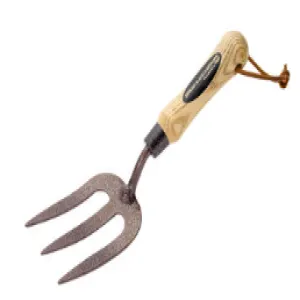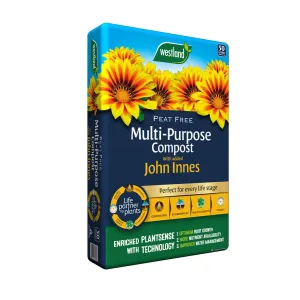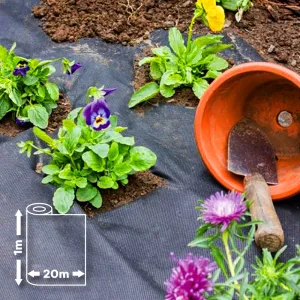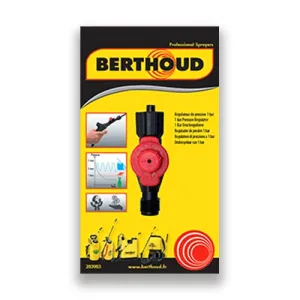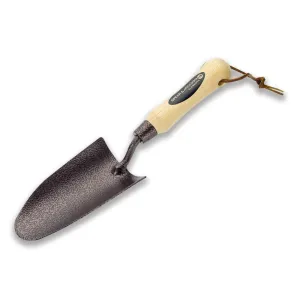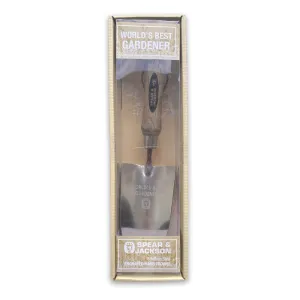You will need:
- Hand fork
- Trowel
- Compost
- Hoe
- Weeding knife
- Weed control fabric membrane
- Bark/gravel
Why Remove Weeds Mechanically?
As much as the most effective way of controlling weeds is to use a weed killer, it is not always possible and not always needed.
You could start by trying to avoid weed problems from the start by using good management. By having a thick growth of healthy grass, you can help to protect your grass from a serious invasion of weeds. Bare patches or areas of slow growing grass are prime areas for weeds to take a hold so ensuring the below measures are followed will help this issue:
- When mowing your grass, make sure you cut it at the correct height as cutting to the incorrect height can weaken the grass.
- Make sure the grass is correctly watered during a prolonged dry spell because the thin open turf caused by drought will be a breeding ground for weeds and moss when the rain does return.
- Raking or scarifying the grass will improve the vigour of the turf. Make sure you don’t overdo it though as too much raking or scarifying can thin out the turf.
- Feeding/fertilising the grass will stimulate the growth. High fertility helps the grass to compete for space against invading weeds.
- As a disease is a patch of weakened or dead grass, keeping on top of this with an appropriate fungicide will stop weeds and moss taking over.
Mechanical Methods:
Depending on where the weeds are growing will depend on what hand tool you use to remove the weeds.
Weeds In Grass:
Annual weeds can be removed quite easily by holding the grass with one hand and pulling out the weed with the other. In an established lawn however, the weed will need to be dug out with a hand fork or trowel. It is best to do this on a day when the turf is actively growing and not too hard. You need to make sure the root is fully dug out, keeping the diameter of the hole as narrow as possible. Once you have removed the weed, fill the hole with compost and firm down the surrounding turf.
Weeds In Beds And Borders And On Bare Ground:
- Hoeing is the traditional method of controlling weeds between plants.
- You need to ensure that you use the hoe with care as to not leave any root behind.
- Choose a day when the soil surface is dry but not too hard.
- You can also ‘Grub out’ by loosening the soil around the weed with a garden or hand fork. Pull the weed gently so that the main roots remain attached.
- If on bare ground the weeds are a reasonably heavy cover, digging would be the traditional answer.
Top Tip: Keep on top of weeds to not let them get out of hand.
Weeds On Paths:
- The best tool to use for getting rid of weeds growing in the c racks would be a weeding knife.
- Slice down either side with the blade edges of the knife to cut through the roots and then turn the blade over.
- Push the blade point down into the ground and then hook below the weed, lift and remove it.
Cultural Methods:
Without preventative measures, inevitably you will see weeds appearing in the soil around your plants. You can help prevent this by cutting down the area of bare earth.
Weed Control Mulch:
- A layer of weed proof material which is usually covered with a layer of gravel, stone chippings, pea shingle, pebbles or bark.
- Heavy duty black polyethene sheeting is the most popular choice to last several years as it will be hardwearing and will keep sunlight out.
- Woven polypropylene or old carpeting are also viable options.
Mulching Before Planting:
Weed control mulching really comes into its own on ground which is due to be planted. This type of mulching is usually most successful when you are making a new border. September is a good time of month to put mulch down for autumn growing of roses etc however you will need to put the mulch down in the spring if it is for vegetables.
Steps to mulching:
- Firstly, cut down and remove tall weeds. If there is too much to do manually, use a weed killer such as glyphosate.
- Fork fertiliser in to the soil, something like Growmore or Fish, Blood and Bone.
- Using polyethylene or polypropylene sheeting, make sure each sheet overlaps the one below; bury the edges in the soil and make slits or cross cuts on the surface to act as planting holes.
- Prick the sheets in areas where puddles are likely to form so that water can move more freely to the plant.
- Plant the plants and carefully cover with your desired decorative surface.




